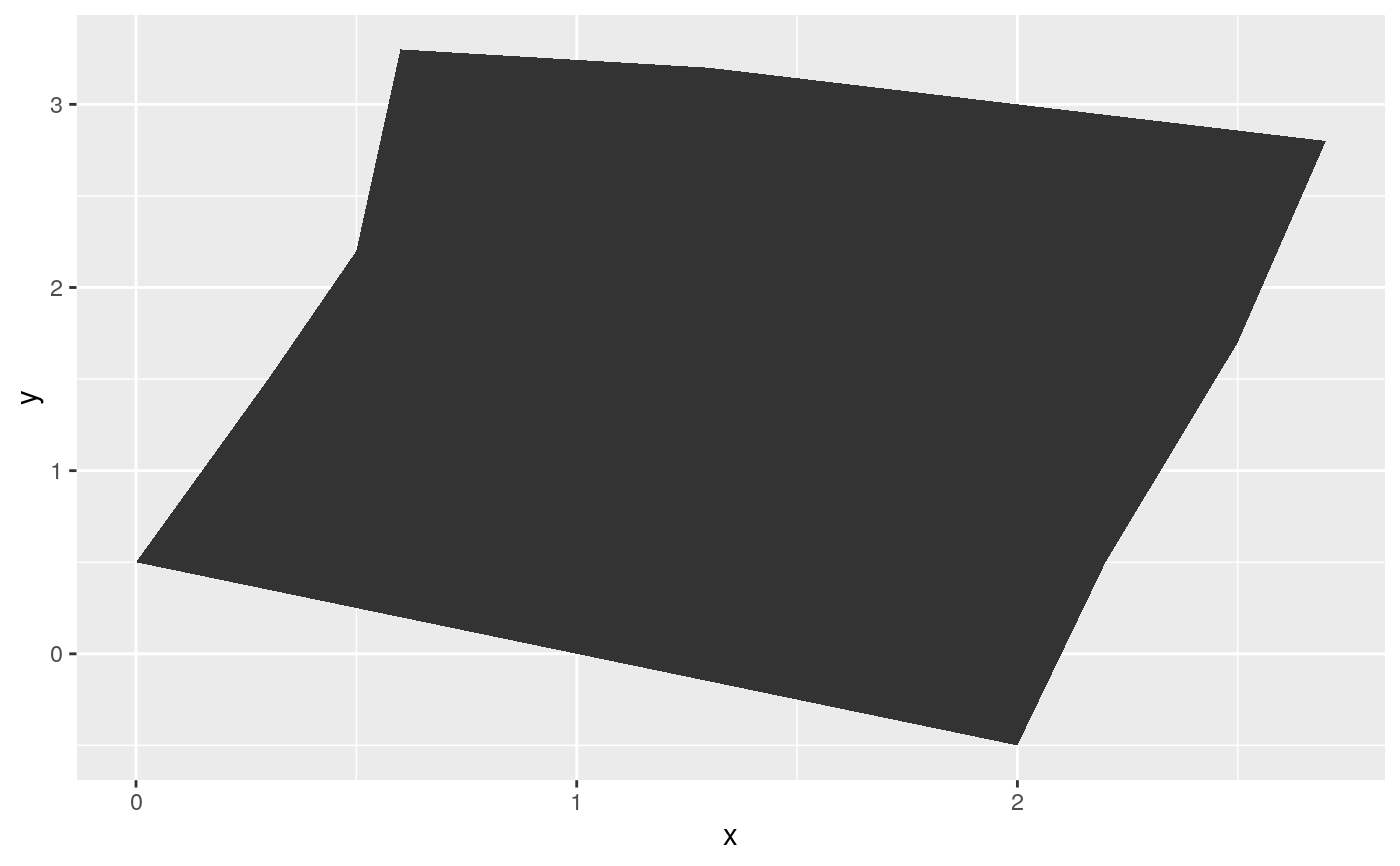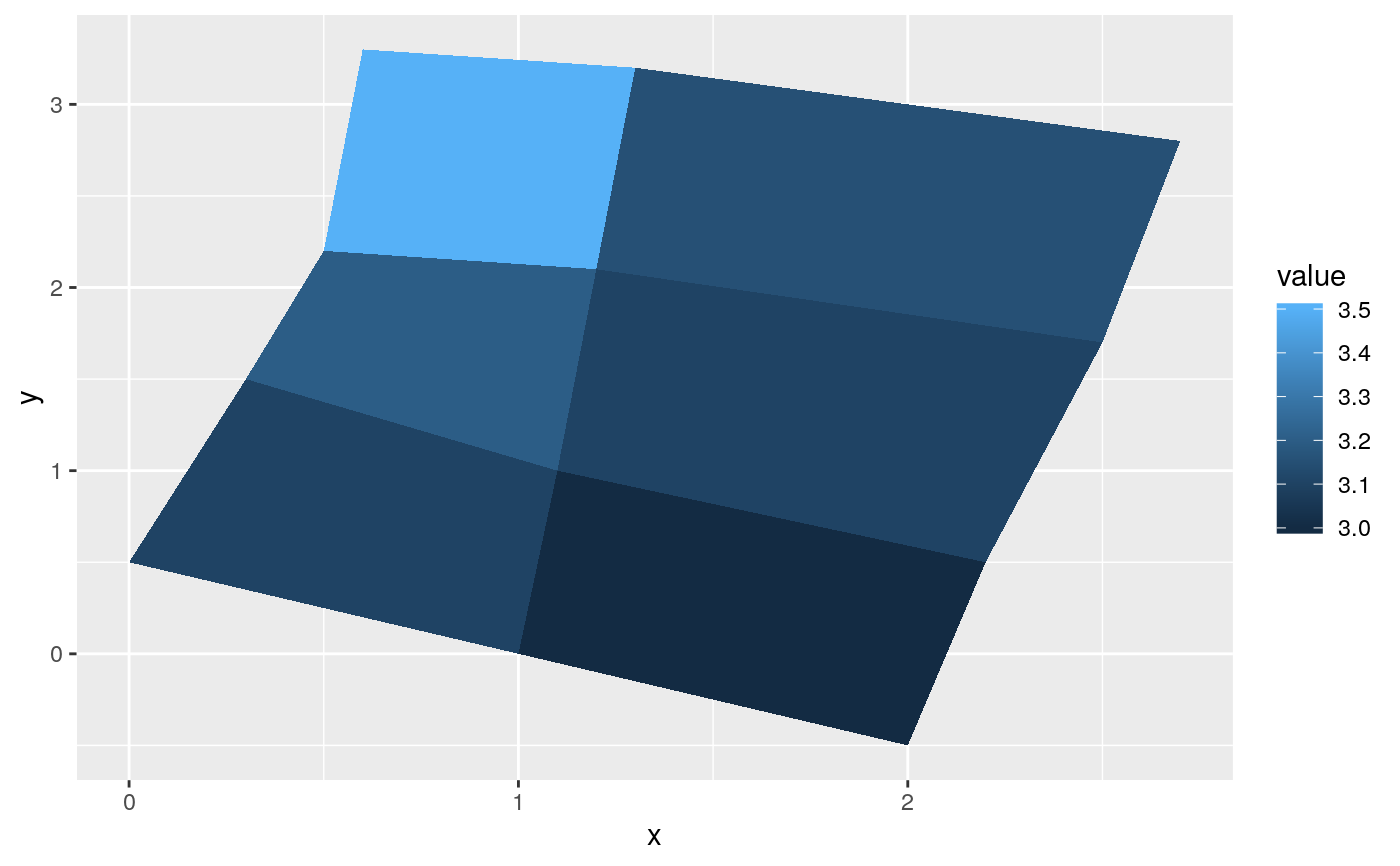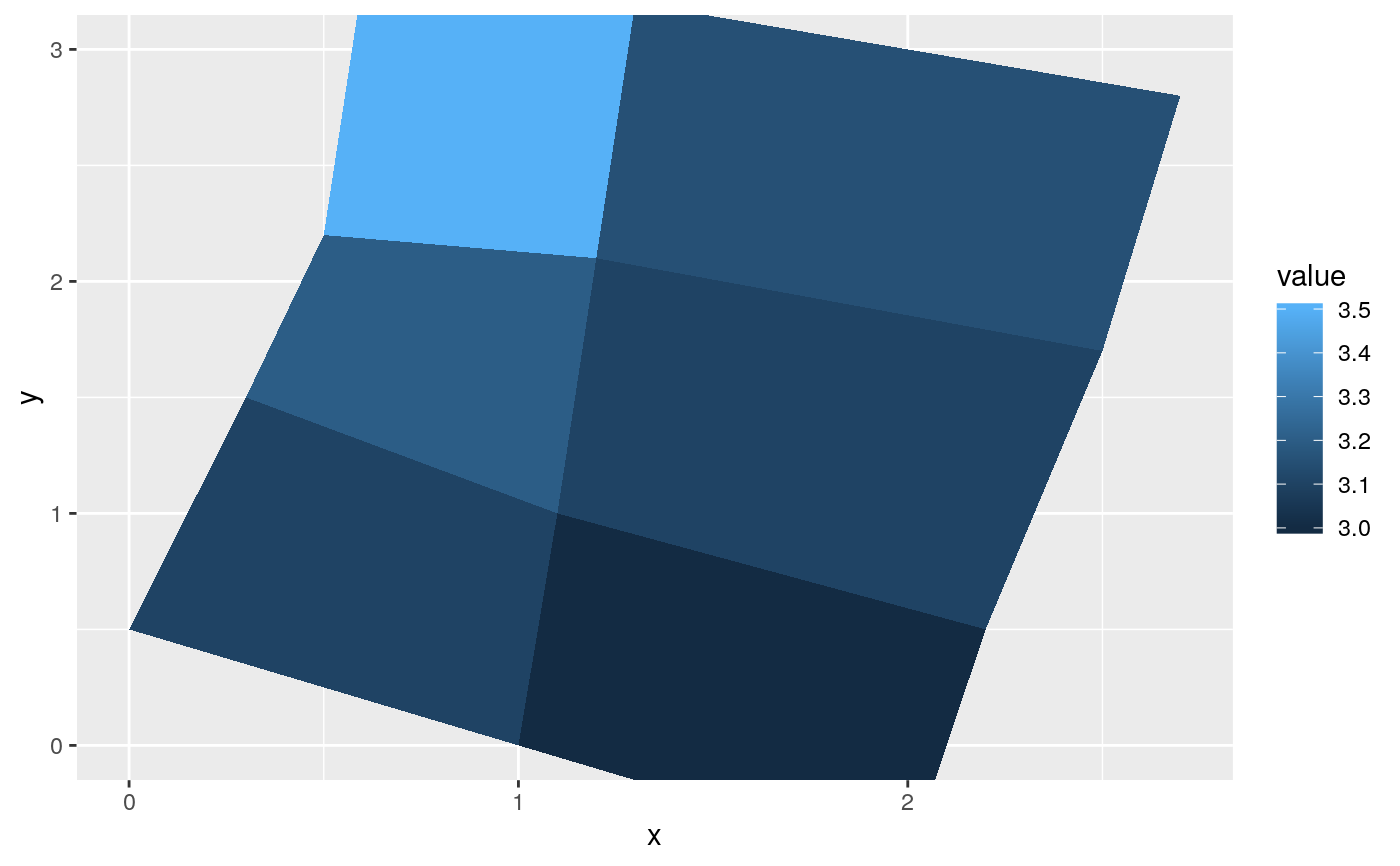This is pure annotation, so does not affect position scales.
geom_map(mapping = NULL, data = NULL, stat = "identity", ..., map, na.rm = FALSE, show.legend = NA, inherit.aes = TRUE)
Arguments
| mapping | Set of aesthetic mappings created by |
|---|---|
| data | The data to be displayed in this layer. There are three options: If A A |
| stat | The statistical transformation to use on the data for this layer, as a string. |
| ... | Other arguments passed on to |
| map | Data frame that contains the map coordinates. This will
typically be created using |
| na.rm | If |
| show.legend | logical. Should this layer be included in the legends?
|
| inherit.aes | If |
Aesthetics
geom_map() understands the following aesthetics (required aesthetics are in bold):
map_idalphacolourfillgrouplinetypesizesubgroup
Learn more about setting these aesthetics in vignette("ggplot2-specs").
Examples
# When using geom_polygon, you will typically need two data frames: # one contains the coordinates of each polygon (positions), and the # other the values associated with each polygon (values). An id # variable links the two together ids <- factor(c("1.1", "2.1", "1.2", "2.2", "1.3", "2.3")) values <- data.frame( id = ids, value = c(3, 3.1, 3.1, 3.2, 3.15, 3.5) ) positions <- data.frame( id = rep(ids, each = 4), x = c(2, 1, 1.1, 2.2, 1, 0, 0.3, 1.1, 2.2, 1.1, 1.2, 2.5, 1.1, 0.3, 0.5, 1.2, 2.5, 1.2, 1.3, 2.7, 1.2, 0.5, 0.6, 1.3), y = c(-0.5, 0, 1, 0.5, 0, 0.5, 1.5, 1, 0.5, 1, 2.1, 1.7, 1, 1.5, 2.2, 2.1, 1.7, 2.1, 3.2, 2.8, 2.1, 2.2, 3.3, 3.2) ) ggplot(values) + geom_map(aes(map_id = id), map = positions) + expand_limits(positions)ggplot(values, aes(fill = value)) + geom_map(aes(map_id = id), map = positions) + expand_limits(positions)ggplot(values, aes(fill = value)) + geom_map(aes(map_id = id), map = positions) + expand_limits(positions) + ylim(0, 3)# Better example crimes <- data.frame(state = tolower(rownames(USArrests)), USArrests) crimesm <- reshape2::melt(crimes, id = 1) if (require(maps)) { states_map <- map_data("state") ggplot(crimes, aes(map_id = state)) + geom_map(aes(fill = Murder), map = states_map) + expand_limits(x = states_map$long, y = states_map$lat) last_plot() + coord_map() ggplot(crimesm, aes(map_id = state)) + geom_map(aes(fill = value), map = states_map) + expand_limits(x = states_map$long, y = states_map$lat) + facet_wrap( ~ variable) }#>#> Warning: there is no package called ‘maps’


